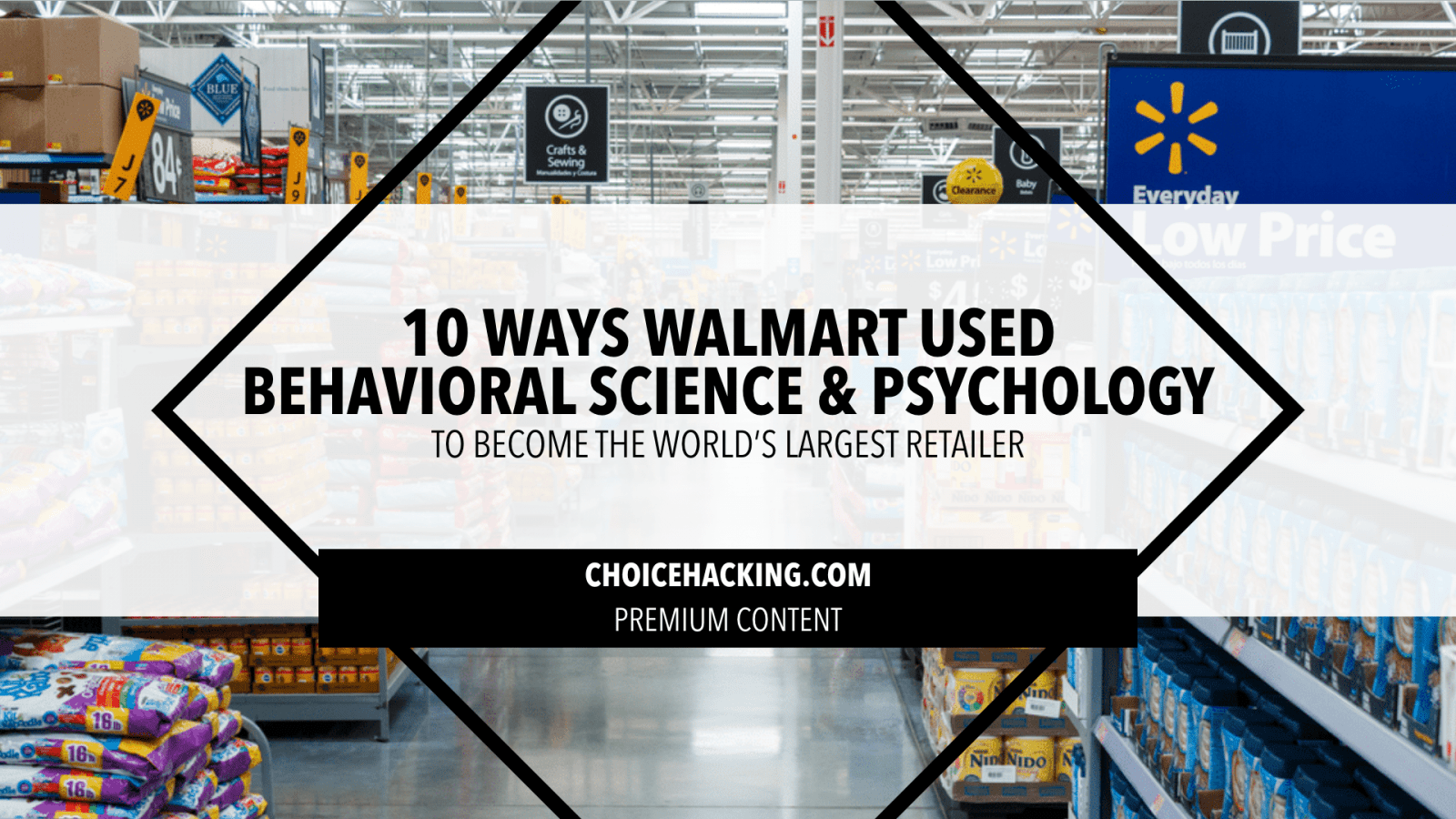
To download your premium PDF eBook (40+ pages of content), please click here.
eBook Introduction Summary
Founded by Sam Walton in 1962, Walmart is a retail juggernaut. It’s the world’s largest company by revenue, with $514.405 billion according to Fortune’s 2019 Global 500 list. The company employs 2.2 million people — that’s more than the population of New Mexico (and 15 other U.S. states).
Walmart’s reason to exist is value. Their entire brand hinges on “Everyday Low Prices,” and everything they do must deliver value for customers. That’s a promise Walmart delivers on, with shoppers saving around 15% on a typical cart of groceries.
Because of low prices, Walmart’s experience must deliver lots of sales
Walmart might have rock bottom prices, but to make those prices deliver profit for the business, they have to get customers in the door and convert them as effectively as possible.
As Sam Walton wrote in his autobiography Made in America:
“Say I bought an item for 80 cents. I found that by pricing it at $1.00 I could sell three ties more of it than by pricing it at $1.20.
I might make only half the profit per item, but because I was selling three times as many, the overall profit was much greater.”
So how does Walmart deliver that volume of sales? One way is by applying behavioral science and psychology — consciously or not — to design, frame, and deliver its retail experience.
How Walmart applies psychology and behavioral science to its experience
There are countless ways Walmart uses psychology and behavioral science in their experience — some purposeful, and some by chance. In this eBook, we'll explore the following ways that Walmart applies behavioral science and psychology to their experience:
- Salience Bias in “Action Alley”
- Anchoring with Rollback offers
- Authority Principle in stocking shelves
- Framing Effect in Walmart+
- Confirmation Bias in cash back cards
- Power of Free in Walmart+
- Priming in store design
- Mere Exposure in “Everyday Low Price”
- Odd-even pricing in Rollback and Every Day Low Price offers
- Peak-end Rule in Greeters and Customer Hosts
